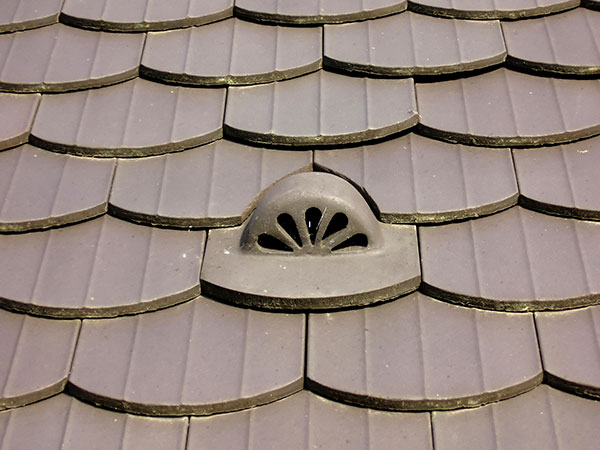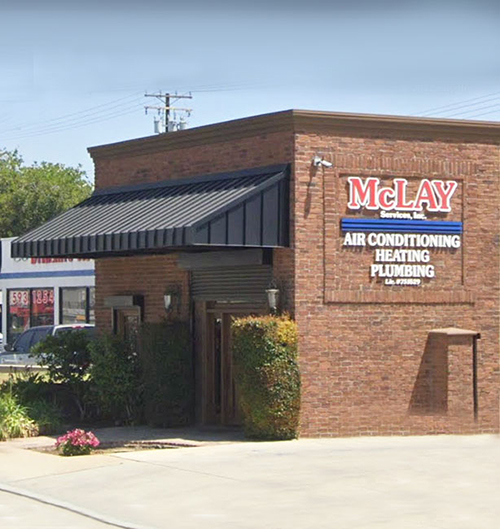Installing a powered attic ventilator in your home is generally not recommended due to a variety of drawbacks, but if you do insist on having one, there are several steps your technician should take to maximize the appliance’s effectiveness.
Seal Air Leaks Between the Attic and the House
Before having a powered attic ventilator (PAV) installed in your roof, you should have an indoor air quality expert try to mitigate the amount of air leakage from inside your house to the attic. Your technician should seal any ductwork in your attic with mastic, and he or she should make sure that any wall cavities used as returns are airtight, such as by sealing the gap between the boots and sheetrock.
Your technician should then look for several features in your attic: open chases for ducts and plumbing stacks; open balloon-framed wall cavities; dropped ceilings over bathtubs, closets, cabinets and hallways; and open floor joists under knee walls. The technician should use expanding urethane sealant and foam sheathing board to seal each of those items off.
The air conditioning or roofing technician should then use sheet metal and high-temperature sealant around chimneys, and then should weatherstrip the pull-down stairs or attic hatch. Finally, he or she should replace repressed light fixtures with airtight alternatives.
Go over this checklist with your technician and make sure each item is address before the PAV is finally installed in the roof.
Optimize Intake Ventilation
A running PAV will require a sizeable amount of intake ventilation. The first and simplest step in boosting ventilation is to make sure existing vents aren’t blocked by insulation, new siding or soffit material, or by dust, pollen and bugs accumulated on the screening of all entry points. Indoor air quality experts recommend replacing any insect screening with hardware cloth (1/4-inch metal screening), which only keeps out rodents. Replacing insect screening is advised because it quickly clogs up when a PAV is in use, making the vent useless. If more intake ventilation is needed into the attic, have the technician install as many soffit vents under the eaves of your roof as necessary.
If your technician finds it untenable to install any new intake vents, he or she should consider setting up a PAV on one end of the attic to blow air toward a PAV of equal capacity on the other end, which will push the air out into the sky above. If this option is viable, the technician just has to make sure no insulation is being blown off the attic floor.
Hook up the PAV to a Thermostat
For starters, the PAV you want installed in your attic should not be too large for the job. As with air conditioning units, bigger is not always better. The smaller PAV you have installed, the less conditioned air it could unintentionally suck out from inside the home, which is the main reason indoor air quality experts caution against PAVs in the first place.
If you still want a PAV for your home in the Rancho Cucamonga, CA foothills area, have a McLay Services technician install it high in the attic, and ask to have us set up the unit with thermostatic control; that way, the PAV’s fan will only turn on when the attic has eclipsed a temperature of your choosing, rather than running continuously. If your attic has a furnace, a McLay technician will install an interlock that shuts off the PAV when the heating unit needs to run. Also, note that a PAV should not be installed if there is a gas or oil water heater in the attic, as the PAV could cause such a unit to backdraft.
Maintain Insect Screening and Intake Vents
If your attic’s intake vents get plugged up with insulation or siding, the PAV will start drawing more cool air from inside your house. Don’t let that happen! Whether you kept your insect screening or switched to hardware cloth, you need to have it inspected and vacuumed regularly, as you should do with the PAV’s insect screening. Additionally, most PAV motors need to be oiled once a year.
Why Choose a PAV for Your Home
Since the main concern about powered attic ventilators is the amount of air leakage in an attic floor often found in a home, if you mitigate those leaks, you may find a PAV a very sensible option, particularly if you work in your attic often or keep items up there that you’d like not to get charred. Also, if you choose one of the newer solar-powered models, you’ll weed out the energy costs of running a PAV, which is another major concern about the ventilation units.
In choosing to alter your roof to make room for a PAV, make sure you have good reasons for upgrading, and have a McLay heating and cooling technician address take the steps mentioned above before the unit gets installed. Your McLay technician can find the best spot for a PAV in your roof, and will also determine if it’s the best course of action for your attic. If it’s not, we can recommend other options to improve the ventilation in your attic. Our whole home performance assessment will give you ideas on how to maximize airflow and heating and cooling efficiency from top to bottom in your residence.
Call McLay Services for Ideas and Help on Improving Ventilation in Your Attic:



